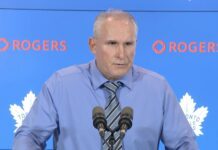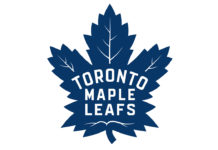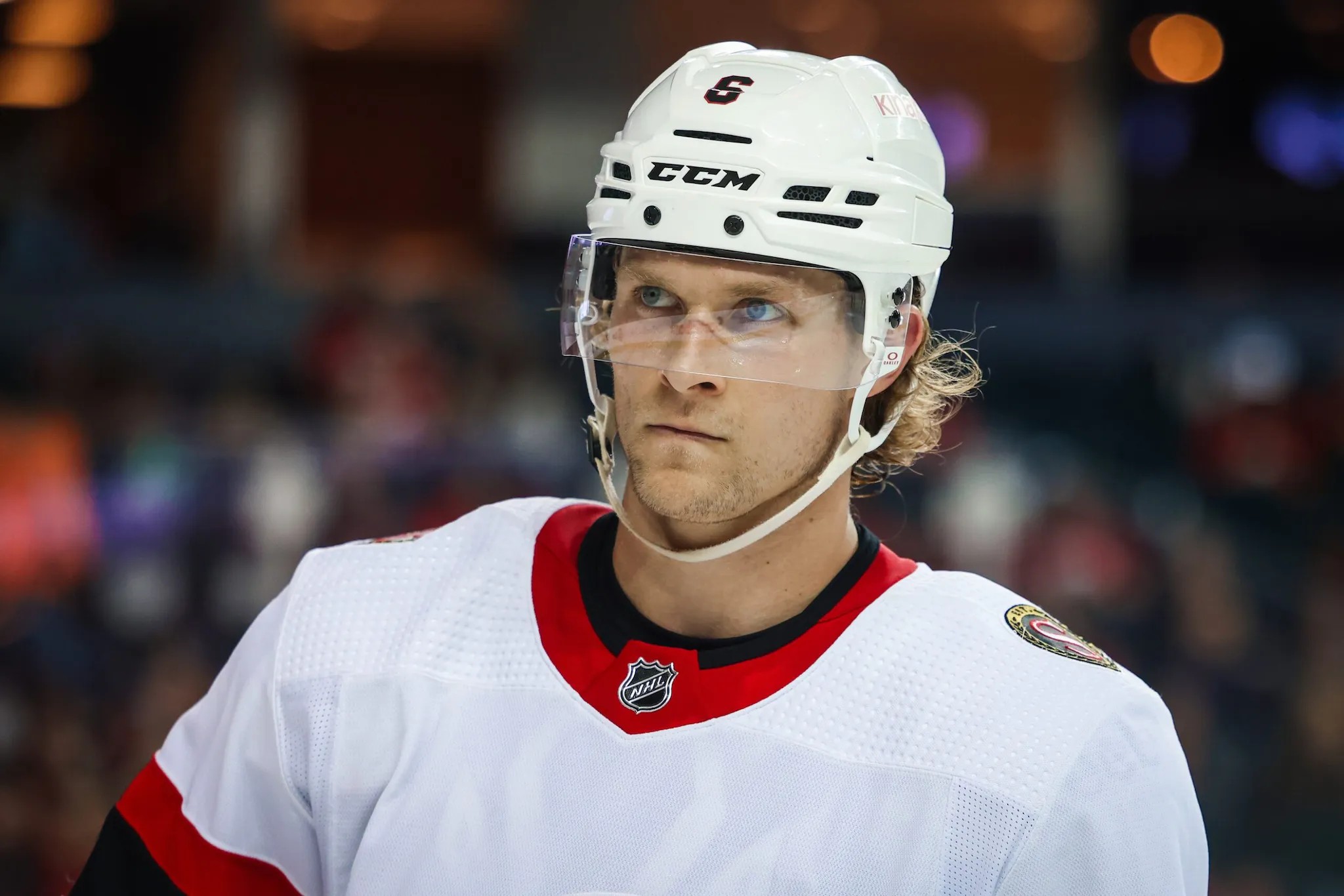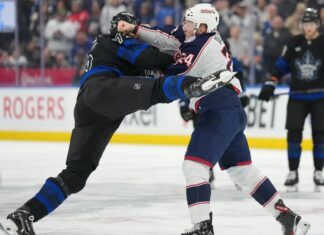Part 1 of my trade targets series looks at three big names with the potential to move the needle for the Maple Leafs for this season and beyond.
Ahead of the trade deadline, we previously broke down how the Leafs should approach the deadline from a buy-or-sell perspective (conclusion: as long as they are in a playoff spot — which they are — they should look to add). We then looked at where their needs lie (at minimum, a top-four defenseman and a veteran forward of quality; although more help if possible would be welcome, of course).
Before we get into players that should be of interest to the Leafs, it’s important to gauge their overall mindset. There is a lot of talk about whether the Leafs are good enough to justify buying, but that’s a narrow prism through which to approach the deadline. They have enough prime-aged talent on the roster to justify continuing to add to the group for years to come.
Auston Matthews and Mitch Marner are still just 26 while William Nylander is 27. Matthew Knies is 21, Nick Robertson is 22, and Pontus Holmberg is 24. Joseph Woll is 25 (note: every player mentioned here has yet to have their birthday this year). There’s a collection of players beyond this group who are not exactly old, either (e.g. Morgan Rielly).
Next season, the lineup of players under contract look like this at the moment:
Knies – Matthews – Marner
_____ – Tavares – Nylander
Holmberg – _____ – Jarnkrok
______ – Kampf – Reaves
Rielly – ____
McCabe – ____
_____ – Timmins
Woll
_____
This leaves the Leafs with just under $22 million (on an $87.5 million cap) to fill out the roster. That might not seem like a lot, but all of Robertson, Simon Benoit, Noah Gregor, and Timothy Liljegren are pending RFAs, and none of them will be able to command a hefty price tag. If they simply brought those players back, it would mean the Leafs would only have to sign a couple of forwards, at least one top-four defenseman, and a goalie to tandem with Woll.
A collection of players on ELCs/cheap contracts makes the team’s life much easier. They’d easily be able to accommodate a top-flight player in the ~$7 million range and properly fill out the rest of the roster.
Adding quality to this group for multiple years is the goal. Look at the Vancouver Canucks as an example; they were nowhere near the playoffs at the last trade deadline, but they went out and bought Filip Hronek, who is playing on their top pairing and enjoying a big season while playing 23:31 per game. He is a big reason the Canucks are where they are today, and they added him last year during a wasted season.
There are all sorts of players we can point to across the league who have become staples for successful franchises and were added around the trade deadline: Brandon Hagel, Artturi Lehkonen, Mattias Ekholm, Hampus Lindholm, and Bo Horvat, to name a few, but the list could go on forever.
The deadline shouldn’t be viewed only as an opportunity to acquire a short-term boost, even though that’s generally what’s happened with the Leafs over the past few years. It’s an opportunity to add to the core. The Leafs have had successful examples in the past — namely, Jake McCabe and Jake Muzzin — where they acquired important players and got multiple seasons of service out of it. Can they do that again this deadline? That is my main question.
The second question is how high can they aim? I say can instead of should because they should aim as high as possible.
When Brad Treliving was at the helm in Calgary, he oversaw a really good Flames team in 2018-19 that ended up finishing 50-25-7 — ranked first in the West — before getting bounced in five games in the playoffs.
Mark Giordano won the Norris that season, Johnny Gaudreau tallied 99 points, and Elias Lindholm and Noah Hanifin were putting up excellent seasons in their first years in Calgary; plus, a 20-year-old Matthew Tkachuk broke out with 34 goals and 77 points, to say nothing of the 82 points in 78 games from Sean Monahan.
At the trade deadline, the Flames went hard after Mark Stone, then 26, and ultimately didn’t meet what was thought to be an astronomical price at the time (Stone was traded to Vegas for Erik Brannstrom, Oscar Lindberg, and a second-round selection). Afterward, Elliotte Friedman noted the following about the trade negotiation and how the Flames approached acquiring the pending UFA:
“I think if Calgary got him there, the Flames loved their chances of it eventually occurring [locking him up long-term]. But word is Ottawa’s ask included Juuso Valimaki, and for the second year in a row, Calgary rejected anyone’s attempts to pry loose the Finnish defenceman.”
Even if Stone didn’t push them over the top that season, the idea of adding him to a core featuring Gaudreau, Tkachuk, Lindholm, Hanifin, Rasmus Andersson, and several other quality players (Mikael Backlund, potentially Sam Bennett, etc.), would have no doubt been a franchise-changing move and a league-altering move considering Stone is the captain of the reigning Stanley Cup Champions. Reportedly, the sticking point was Juuso Valimaki.
I hope a lesson was learned here. When there is a strong core in place and a chance to add age-appropriate quality to it, you need to take it rather than standing firm and quibbling about 18-21-year-old prospects and picks with the hope they one day pan out. It’s not exactly mortgaging the future to add talent now if the team can retain the talent for years to come.
On a similar note, it’s worthwhile reviewing Alec’s piece from 2018 about a hypothetical Leafs trade package of young players/futures in exchange for Ryan McDonagh and some of the reactions in the comments at the time.
With all of that said, here are some players I would be interested in, starting with targets in the “difference makers” category. In Part 2, I’ll break down the players I’m interested in but with reservations about the price as well as some bargain-bin options.
The Difference Makers
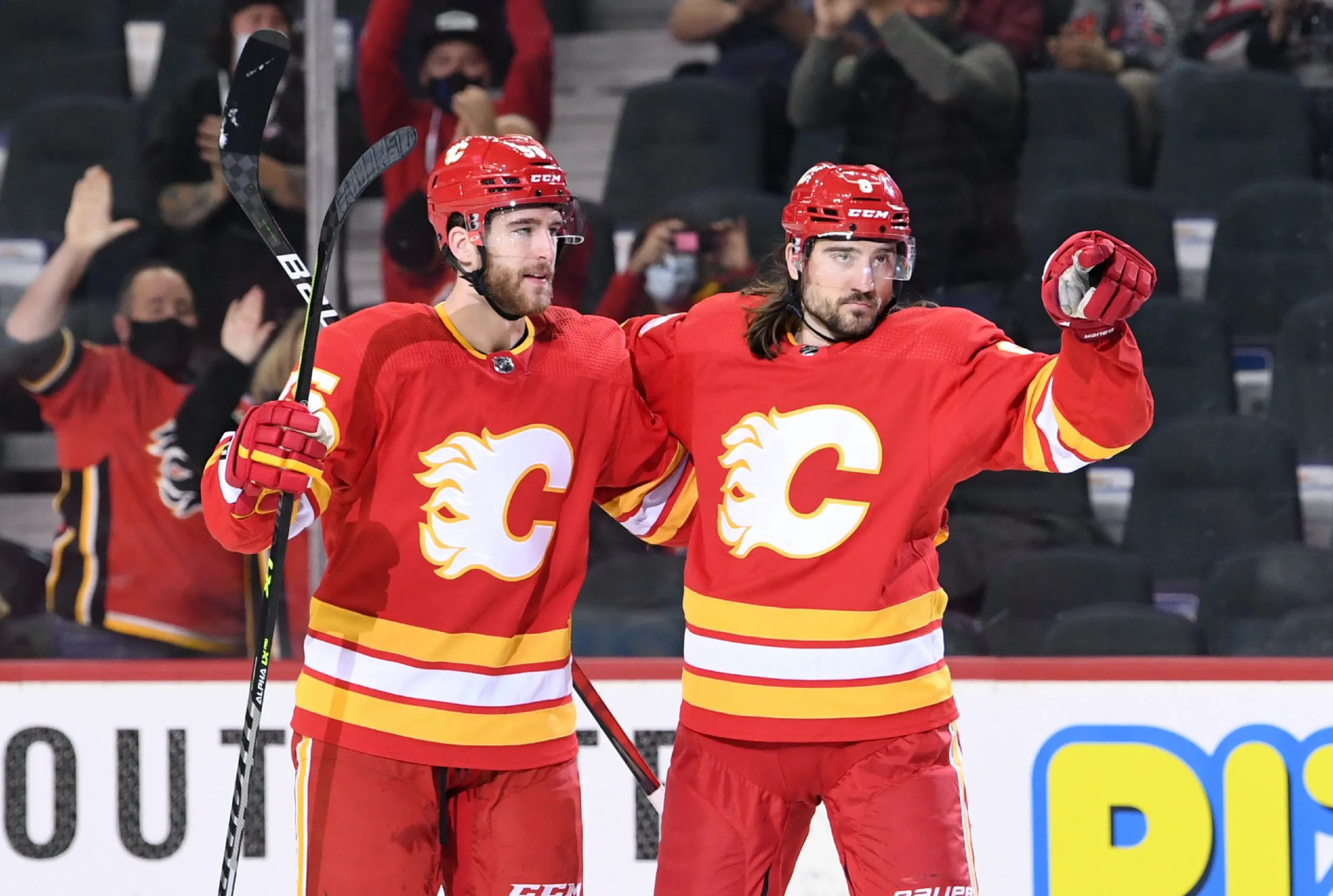
Jakob Chychrun (LHD)
Age: 25 years old
2023-24 Season: 8 goals, 27 points in 48 games
Contract status: Signed through next season at $4.6 million AAV
What’s to like?
Chychrun has all the tools. Big and strong (6’2, 205 pounds), he is a great skater and he has one of the best shots of any defenseman in the league. Four seasons ago, he racked up 18 goals in just 56 games. This season, he already has eight in 48.
For a Leafs team that receives little offensively from their defensemen not named Morgan Rielly, it would be a game-changer. It would give the Leafs two mobile, offensive defensemen who can handle their own defensively and play huge minutes. The coaching staff could almost always have one of them on the ice.
Chychrun never played for a good team in his entire career, and in Ottawa, his most common partner since arriving has been Travis Hamonic, who is barely a credible NHLer at this point in his career. Recently, Chychrun has been forced onto the right side to play alongside Thomas Chabot, which has been an awkward fit for everyone involved.
I’d like to see him on a good team that plays with proper systems and has good players to surround him with. I don’t think we’ve seen the best version of him yet, and even still, it’s very clear to me he’s an actual game-breaker on defense, which is rare to find.
The added bonus with Chychrun is that he has another year left on his deal at a bargain price of $4.6 million, aligning perfectly with the last year of John Tavares’ deal before it’s time to put pen to paper on a new contract with the then-27-year-old defenseman.
What are the concerns?
While Chychrun’s talent is too tantalizing to ignore, it’s worth mentioning that he’s not exactly a perfect fit for the Leafs for this season. He’s left-handed, and while he can play the right, the Leafs don’t exactly have many defensively stout players to pair him with so that he can run wild. I would be wary of a Rielly – Chychrun top pairing.
He also hasn’t been a regular penalty killer in two years, and while I think you can teach just about anyone how to penalty kill, it’s still noteworthy. Most concerning, his only fully healthy season was the 56-game COVID season. In 2019-20, he played 63 out of 70 games. In his rookie season, he appeared in 68. It should be noted that he has played in every game so far this season with the Senators, but the injury risk is fair to point out.
The price to retain Chychrun will also not be cheap, and it would be tough to stomach paying a big acquisition price before watching him walk away in 1.5 seasons, so the pressure would really be on to strike a long-term deal.
Noah Hanifin (LHD)
Age: 27 years old
2023-24 Season: 9 goals, 26 points in 50 games
Contract Status: Pending UFA
What’s to like?
Hanifin checks a lot of boxes. He’s at a good spot in the age curve, he does a bit of everything (including penalty killing), and he’ll eat minutes for a team that has struggled to string together reliable shifts from their defense.
While he’s not right-handed, the Leafs could play him and Rielly off of each other and try to control games with their tempo, speed, and skill on the ice for roughly 80 percent of the game. Hanifin’s goal totals are up a bit this season, but he’s also a proven legitimate offensive contributor from the back end. He has two 10-goal seasons to his name already and scored seven last season, which would have led all Leafs defenders in scoring. He would add real offense from the defense to a team that desperately needs it while also bringing solid defensive play.
Presumably, if the Leafs pulled the trigger on a deal, they would then sign him through the rest of his prime. Considering his age and natural skating ability, you would like to think a long-term contract would age gracefully for the years to come as well.
What are the concerns?
The biggest concern is obvious: the expiring contract and whether Hanifin would want to stay in Toronto. There have been rumours about Hanifin wanting to return to the USA (he is American), and if that is the case, there is not much else to be said.
If Hanifin is willing to stay, it’s fair to wonder exactly how good he is. In Calgary, he has been playing with Chris Tanev, who is a fully established and excellent player in the league. Can Hanifin drive a pairing with a notably lesser player riding shotgun alongside him? There is an argument to be made that Hanifin is a good-at-everything, great-at-nothing type of player with some concerns as to how much of a needle mover he truly is.
When we add in the fact that an acquiring team would have to pay him a hefty sum immediately to keep him — which would make the margins really tight for the Leafs to add elsewhere — they would have to be certain Hanifin is a legitimate difference-maker who shades more towards great than good.
Travis Konecny (RW)
Age: 26 years old
2023-24 Season: 24 goals, 45 points in 52 games
Contract Status: Signed through next season at $5.5 million AAV
What’s to like?
If you are familiar with Konecny at all, I don’t need to explain why he’s enticing. He’s a small step below Brad Marchand and Matthew Tkachuk as a super pest who can score, and his fingerprints are all over any game he plays in.
Konecny leads the league in breakaway goals this year in part due to his speed and he has added five shorthanded goals to boot. I can already hear the pushback that the Leafs already have two high-end right wingers on their roster, but I would note a few things.
The first is that the Leafs have essentially no secondary scoring right now. At game 49, Calle Jarnkrok is fifth on the team in goals with 10. It’s not good enough. Konecny would give them all sorts of fun potential lineup combinations, and I would be okay with forcing one of him or Nylander onto their off-wing to load up if need be. He’s that good.
Ultimately, when a player this good is still young and potentially available, it is borderline malpractice not to inquire at all.
What are the concerns?
While Konecny signed for another year at $5.5 million is attractive, the prospects of his and Marner’s contract expiring at the same time — plus the acquisition cost — would be worrisome.
Now, I could potentially envision a scenario where the Leafs finally run with Nylander at center, allowing them to pair Nylander with Konecny to go along with Matthews and Marner. Tavares will be an aging pending free agent at that point, so there is a scenario in which it makes complete sense, but adding another player in line for a big payday — to go along with the big acquisition cost — comes with a risk that we can’t just ignore.
In Part 2, I’ll break down the players I’m interested in with reservations about the price as well as some bargain-bin options.


